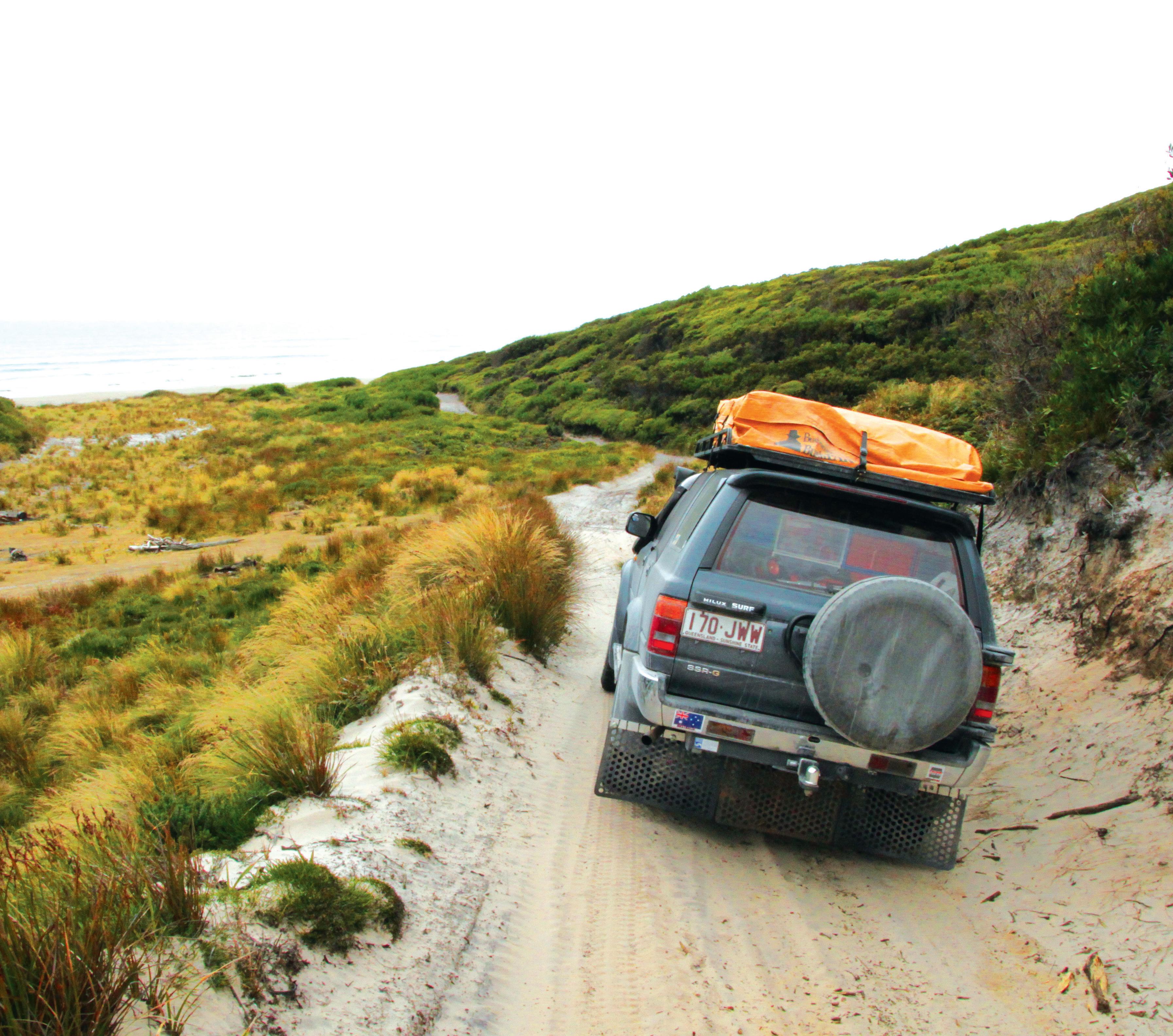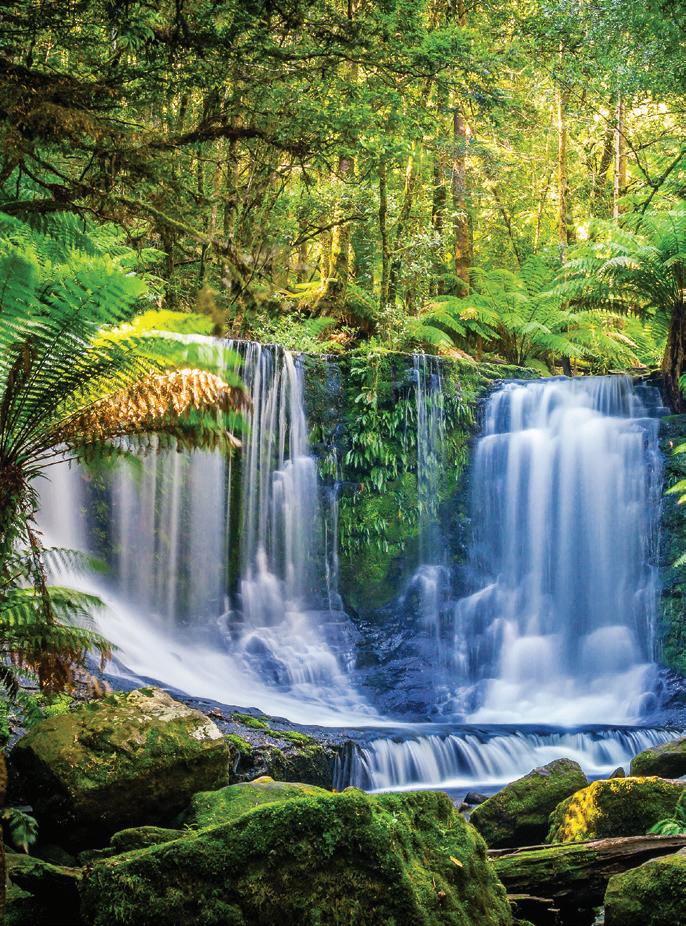
2 minute read
4 Tasmania Highlights
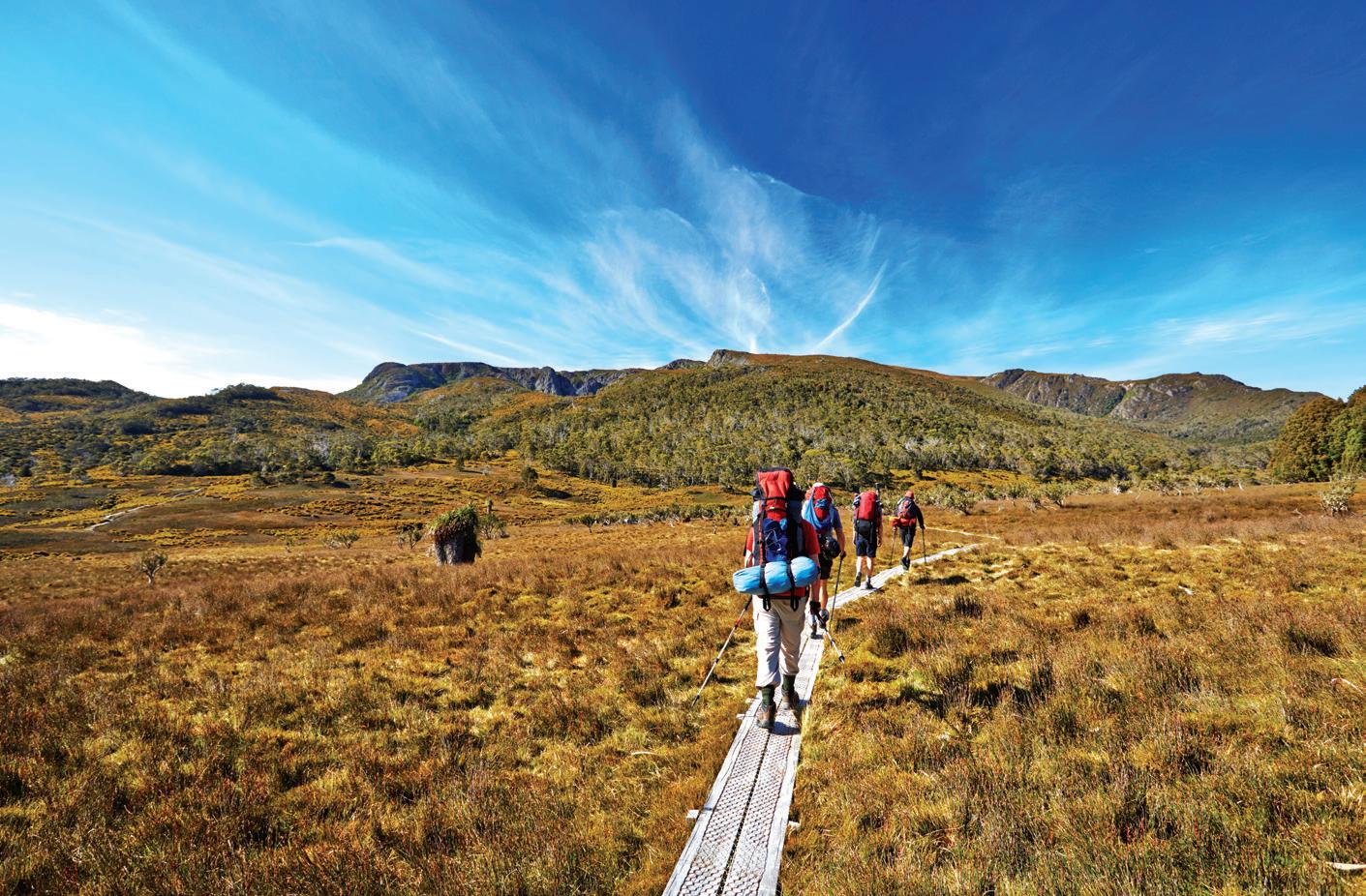
Grand views Hike or bike
Advertisement
The wind shelter and tourist information centre on the summit of Mount Wellington (1,271m) in Hobart, the capital city of Tasmania, Australia.
Natural wonderland
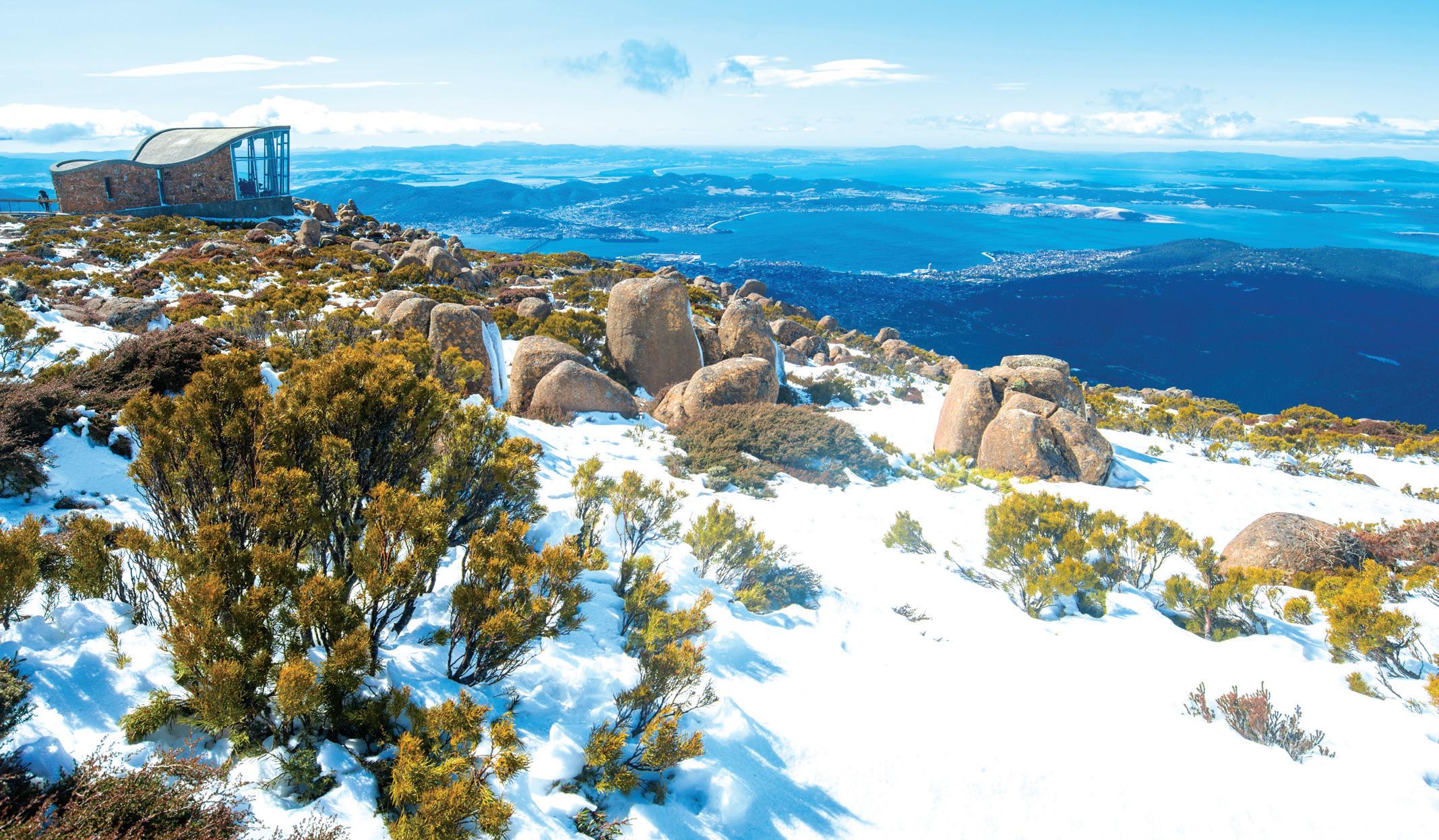
History you can touch
The Richmond Bridge is a heritage-listed arch bridge located on the B31 in Richmond. Located 25km north of Hobart, this convictbuild bridge is the oldest stone span bridge in Australia having been opened in 1825. In 2005, the bridge was recognised as an outstanding historic place and added to the Australian National Heritage List.
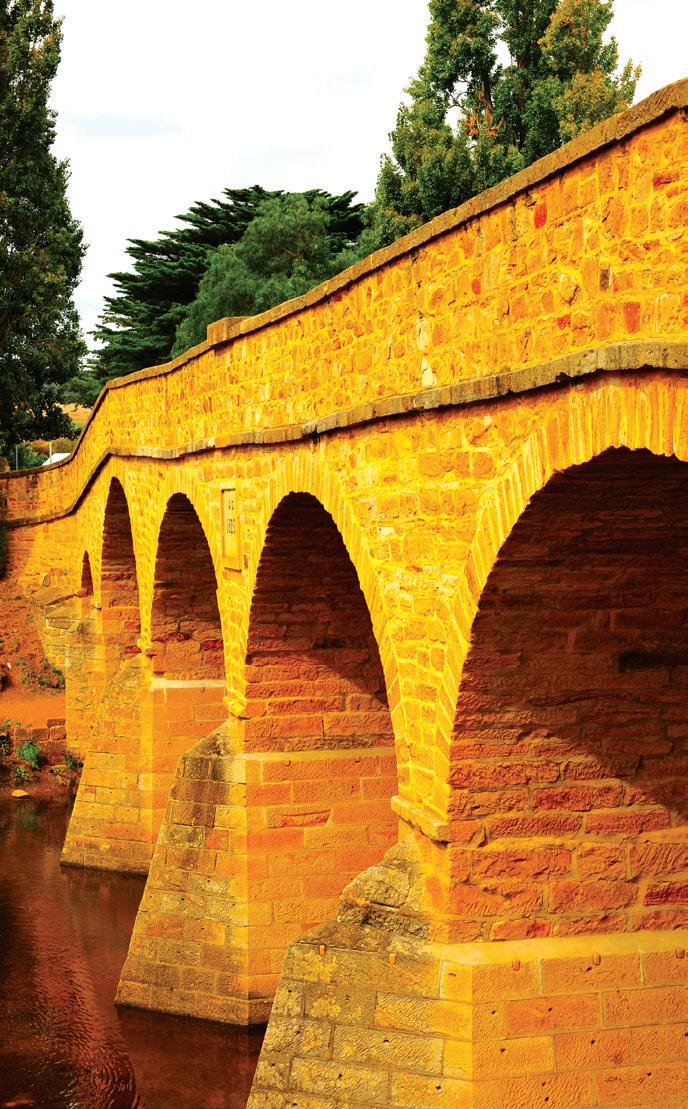
Geological marvels
The most distinctive landmark in Stanley is Munatrik, commonly called The Nut. This geological formation is an old volcanic plug and was first sighted by Bass and Flinders on their circumnavigation of Van Dieman’s Land (now Tasmania) in 1798. Originally called Circular Head, The Nut has steep sides rising 143m to its flat top.
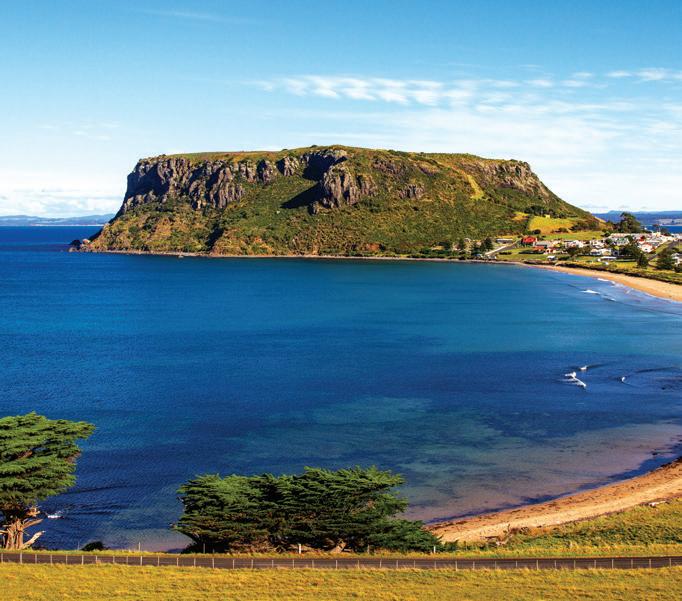
4WD paradise
There is simply no better way to explore Tasmania than by 4WD. With some of the most spectacular camping sites only accessible by 4WD, the real Tasmania is criss-crossed by dozens of four-wheel drive tracks, many the remnants of mining trails dating back to early 1800s. Discover forgotten towns and enjoy unrivalled views with our 15 detailed 4WD Maps (page 184) or by contacting one of Tasmania’s friendly four-wheel drive clubs.
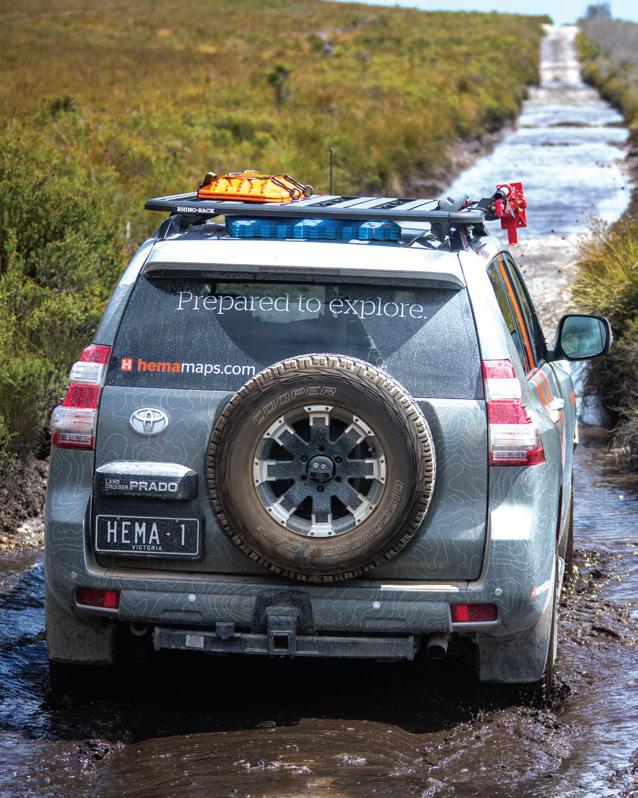

Points of interest
The Franklin-Gordon Wild Rivers National Park is one of 19 in Tasmania. Located 117km west of Hobart, this untouched wilderness is named for the two rivers that lie within the park’s boundaries – the Franklin River and the Gordon River.

Rich Aboriginal heritage
Dating back over 40,000 years, the original inhabitants of Tasmania (which they called Lutruwita) left images and artefacts which detail their expression and beliefs. Today, Aboriginal Heritage Tasmania works with the community to promote the recognition, protection, and management of Tasmania’s unique Aboriginal culture heritage. It’s thought that more than a dozen different Aboriginal language groups existed in Tasmania prior to 1830, though most languages and traditions were lost with the death of the last native language speaker, Fanny Cochrane Smith, in 1905. A language revival project known as the Palawa Kani project is working to rediscover these lost languages via intensive archaeological research. Find out more at http://tacinc.com.au/programs/palawakani/


4WD touring
Unrivalled challenges and scenery makes Tasmania a bucket list location for many 4WDers, all it asks is that you be well prepared and, of course, to tread lightly.
Four-wheel drive touring is a terrific way to see parts of Tasmania that are otherwise difficult to access.
We mention a few of the better-known four-wheel drive tracks Tasmania has to offer in this guide, but there are many more, and local four-wheel drive clubs provide by far the most extensive list available.
In Chris Boden’s book, OffRoad Tasmania: 4WD Tracks in
Tasmania you will find over 55 roads are tracks to whet the appetite of even the most adventurous four-wheel driver, as well as the contact details of many of the state’s 4WD clubs.
Just remember, many areas of Tasmania are protected and special consideration must be taken when driving in such areas. Care must be taken to prevent the spread of Root Rot (see page 27) and to avoid damaging protected plant life.
It is also recommended that your vehicle is in tip-top shape before setting off. Fuel and mechanical provisions can be few and far between. It may also be very difficult to find phone or radio reception in some parts of Tasmania, meaning a high level of preparedness and selfreliance is part of nearly every off-road journey.
For more information about four-wheel driving in Tasmania, or to discover 15 of the best four-wheel drive tracks the state has to offer, visit page 184 of this guide.
Tasmania’s windswept west coast provides some of the more challenging, but equally beautiful, 4WD locations to explore – just remember to pack all that you may need (Pic Hema Maps).
